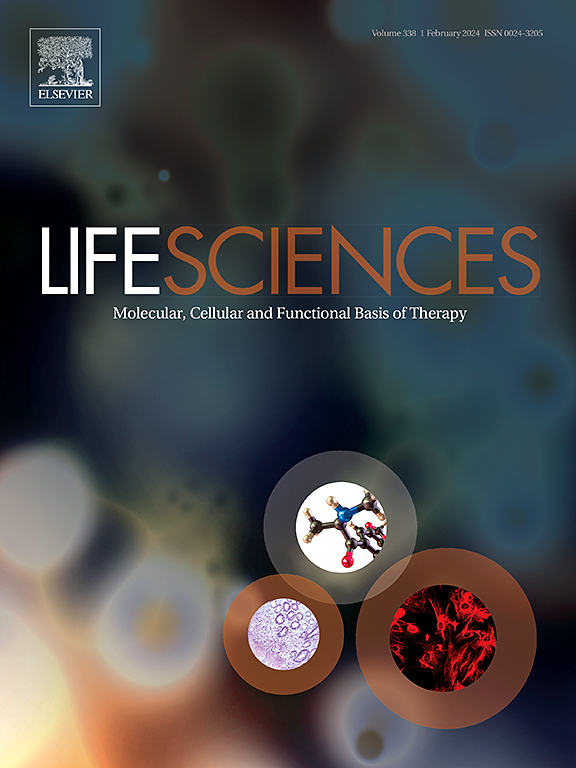ER stress-related mitochondrial protein-coding gene risk model and in vitro experiments unveil OMA1 as a novel prognostic and therapeutic biomarker for low-grade glioma
IF 5.1
2区 医学
Q1 MEDICINE, RESEARCH & EXPERIMENTAL
引用次数: 0
Abstract
Background
Low-grade gliomas (LGG) are known for their slow growth yet retain the potential to progress to more aggressive malignancies. Glioma cells are frequently exposed to stressors such as hypoxia, nutrient deprivation, and oxidative stress, which disrupt protein folding within the endoplasmic reticulum (ER), leading to ER stress and activation of the unfolded protein response (UPR). ER stress plays a complex role in glioma initiation, progression, and resistance to chemotherapy. Dysregulated signaling between mitochondria and the ER can further exacerbate ER stress, impacting glioma cell survival and proliferation. Elucidating the molecular mechanisms by which mitochondrial interactions influence ER stress may reveal novel therapeutic targets for LGG treatment.
Methods
ER-stress related mitochondrial protein-coding genes (ERSMGs) linked to LGG prognosis were identified using Mitocarta3.0, Genecards, CGGA, and TCGA data. A prognostic model was developed via univariate and LASSO-Cox regression and validated by ROC curves. OMA1's role was assessed through knockdown experiments in LGG cell lines.
Results
Eleven ERSMGs were significantly associated with LGG prognosis. The model achieved reliable predictive accuracy (AUC > 0.6) and stratified patients into high- and low-risk groups with distinct survival rates. High-risk patients exhibited increased sensitivity to SB505124. OMA1 knockdown in LGG cells induced ER stress by promoting mitochondrial fusion, increasing mtROS, ultimately inhibiting cell proliferation and invasion.
Conclusion
This study provides a novel prognostic model based on ERSMGs, offering novel insights into LGG progression and invasion. OMA1-mediated mitochondrial dysfunction and ER stress play critical roles in glioma cell growth and survival, representing potential therapeutic targets.
内质网应激相关线粒体蛋白编码基因风险模型和体外实验揭示了OMA1作为低级别胶质瘤预后和治疗的新生物标志物。
背景:低级别胶质瘤(LGG)以其生长缓慢而闻名,但仍有可能发展为更具侵袭性的恶性肿瘤。胶质瘤细胞经常暴露于应激源,如缺氧、营养剥夺和氧化应激,这些应激源会破坏内质网(ER)内的蛋白质折叠,导致内质网应激和未折叠蛋白反应(UPR)的激活。内质网应激在胶质瘤的发生、发展和化疗耐药中起着复杂的作用。线粒体和内质网之间的信号失调可进一步加剧内质网应激,影响胶质瘤细胞的存活和增殖。阐明线粒体相互作用影响内质网应激的分子机制可能揭示LGG治疗的新靶点。方法:利用mitcarta3.0、Genecards、CGGA和TCGA数据,鉴定与LGG预后相关的er应激相关线粒体蛋白编码基因(ERSMGs)。通过单变量和LASSO-Cox回归建立预后模型,并通过ROC曲线进行验证。通过在LGG细胞系中进行敲低实验,评估了OMA1的作用。结果:11例ersmg与LGG预后显著相关。该模型获得了可靠的预测准确性(AUC > 0.6),并将患者分为生存率不同的高危组和低危组。高危患者对SB505124的敏感性增加。LGG细胞OMA1敲低诱导内质网应激,通过促进线粒体融合,增加mtROS,最终抑制细胞增殖和侵袭。结论:本研究提供了一种新的基于ERSMGs的预后模型,为LGG的进展和侵袭提供了新的见解。oma1介导的线粒体功能障碍和内质网应激在胶质瘤细胞生长和存活中起关键作用,是潜在的治疗靶点。
本文章由计算机程序翻译,如有差异,请以英文原文为准。
求助全文
约1分钟内获得全文
求助全文
来源期刊

Life sciences
医学-药学
CiteScore
12.20
自引率
1.60%
发文量
841
审稿时长
6 months
期刊介绍:
Life Sciences is an international journal publishing articles that emphasize the molecular, cellular, and functional basis of therapy. The journal emphasizes the understanding of mechanism that is relevant to all aspects of human disease and translation to patients. All articles are rigorously reviewed.
The Journal favors publication of full-length papers where modern scientific technologies are used to explain molecular, cellular and physiological mechanisms. Articles that merely report observations are rarely accepted. Recommendations from the Declaration of Helsinki or NIH guidelines for care and use of laboratory animals must be adhered to. Articles should be written at a level accessible to readers who are non-specialists in the topic of the article themselves, but who are interested in the research. The Journal welcomes reviews on topics of wide interest to investigators in the life sciences. We particularly encourage submission of brief, focused reviews containing high-quality artwork and require the use of mechanistic summary diagrams.
 求助内容:
求助内容: 应助结果提醒方式:
应助结果提醒方式:


